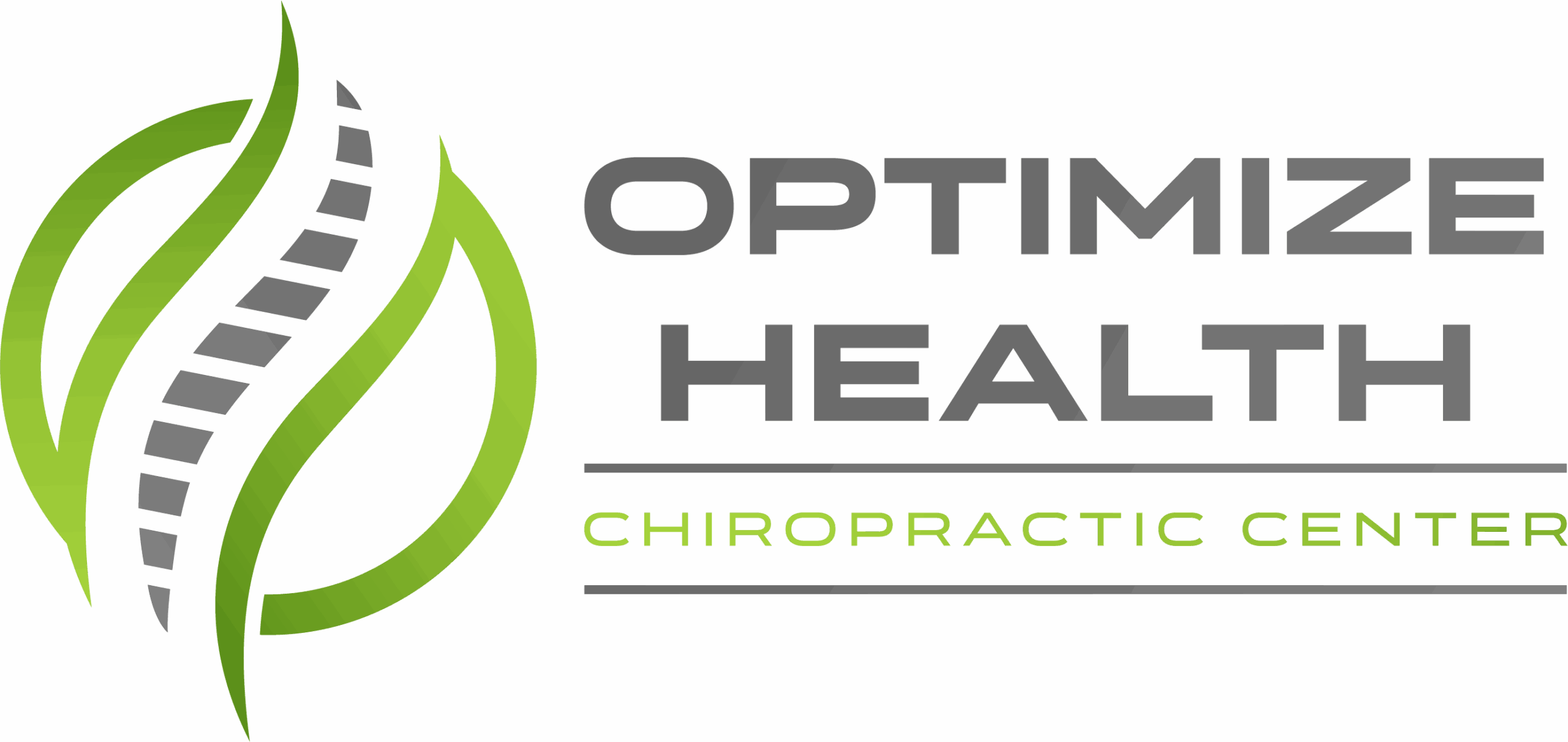When it comes to neck injuries, many people often think that aggressive treatments or medications are the only way to find relief. However, as a local chiropractor, I want to introduce you to the concept of soft techniques, which can provide a gentler and more natural approach to healing. These methods include therapies such as myofascial release and gentle stretching, which aim to alleviate pain and improve mobility without the need for harsh manipulation.
By focusing on the body's natural ability to heal, soft techniques can support your recovery in a way that feels comfortable and nurturing. If you're interested in learning more about how these gentle methods can enhance your neck health and overall well-being, I invite you to explore the unique benefits and applications of chiropractic care. Your journey to better neck health may start with the gentle touch of soft techniques!
Understanding Neck Injuries
As a local chiropractor, I want to help you understand the intricacies of neck injuries and how they can affect your overall health. Neck injuries can occur suddenly, whether from a car accident, a sports activity, or even from poor posture during daily tasks.
It's important to recognize that your neck is a complex structure composed of vertebrae, muscles, tendons, and ligaments, all of which work together to support your head and enable movement. When any of these components experience trauma or strain, the results can range from mild discomfort to severe pain and limited mobility.
One of the most common neck injuries I see in my practice is whiplash. This injury occurs when the neck is subjected to sudden jerking motions, leading to stretching and tearing of the soft tissues. Additionally, muscle strains can arise from overuse or awkward positioning, which can contribute to your discomfort.
Herniated discs can complicate matters further, as they may press on nerves and lead to radiating pain down your arms.
Being able to recognize the symptoms of neck injuries is crucial. You may experience stiffness, headaches, or tingling sensations in your arms. If you notice any of these signs after an incident, I encourage you to seek medical attention.
Early diagnosis and intervention can significantly influence your recovery process and help restore your neck's function.
Prevention plays a vital role in maintaining your neck health. I recommend practicing good posture, strengthening your neck muscles through targeted exercises, and using ergonomic furniture to reduce the risk of injuries.
Benefits of Soft Techniques
As your local chiropractor, I want to share the incredible benefits of soft techniques for treating neck injuries.
Many of my patients have found that these gentle methods provide significant pain relief, leading to enhanced comfort in their daily lives.
Not only do these techniques help alleviate discomfort, but they also play a crucial role in restoring mobility, making it easier for you to engage in everyday activities that you enjoy.
Pain Relief Enhancement
As a local chiropractor, I want to share with you the many benefits of soft techniques for managing neck injuries, especially when it comes to enhancing pain relief. These methods focus on gentle manipulation and stretching, which help your muscles relax and alleviate tension. Techniques such as massage therapy, gentle yoga, and myofascial release can significantly reduce your discomfort.
It's important to understand that when you engage in these soft techniques, you're not simply numbing the pain; you're addressing the root causes of your discomfort. For example, by releasing tight muscles, we can improve blood circulation, which is essential for healing. This process often leads to a decrease in inflammation, providing additional relief from pain.
Moreover, these techniques promote an overall sense of well-being and relaxation. This is crucial, as lower stress levels can help prevent the exacerbation of pain. As you incorporate these methods into your routine, you may notice a gradual improvement in your neck condition, making everyday activities more manageable and enjoyable.
Integrating soft techniques into your recovery plan can truly be transformative. By enhancing your body's natural ability to heal, you can regain comfort and functionality without solely relying on medication or invasive procedures.
I encourage you to embrace these approaches; they can set you on a path toward lasting pain relief and a healthier, more active lifestyle.
Improved Mobility Restoration
Restoring mobility after a neck injury is an essential part of your recovery journey, and as your local chiropractor, I want to emphasize the importance of gentle techniques in this process.
Methods such as gentle stretching, myofascial release, and soft tissue mobilization are key components that can significantly enhance the range of motion and flexibility in your neck.
By targeting muscle tension and restrictions, these soft techniques allow you to move more freely and comfortably. You may notice a reduction in pain and discomfort, which is vital for your overall recovery.
Additionally, these therapies improve blood flow to the injured area, promoting healing and reducing inflammation. Engaging in these gentle approaches equips your body with the tools it needs to regain its normal function. As a result, you'll find that everyday activities become easier, ultimately leading to a better quality of life.
Another important aspect of these techniques is that they help you develop body awareness. This means you'll learn to identify movements that could aggravate your injury, allowing you to take a proactive stance in your recovery.
By preventing future complications, we ensure a more sustainable healing process. Incorporating soft techniques into your rehabilitation plan is crucial for regaining mobility, facilitating healing, and empowering you to return to your daily activities with confidence.
As your chiropractor, I'm here to guide you through this journey and help you achieve optimal health through natural healing methods.
Gentle Stretching Exercises
As a local chiropractor, I want to share with you the benefits of incorporating gentle stretching exercises into your daily routine. These exercises can significantly alleviate neck discomfort and enhance your overall mobility. By releasing tension, improving flexibility, and promoting blood circulation in the neck area, you can experience a more comfortable and functional neck.
The great news is that you don't need to dedicate hours to these stretches; just a few minutes each day can lead to remarkable improvements.
Let's start with a simple yet effective neck tilt. Find a comfortable seated or standing position, and gently tilt your head toward one shoulder, holding the stretch for 15-30 seconds. You should feel a mild stretch on the opposite side of your neck. Be sure to repeat this on the other side. This stretch is excellent for relieving tightness and enhancing your range of motion.
Next, I recommend trying the chin tuck. While in a seated or standing position, gently tuck your chin towards your chest, ensuring your head aligns with your spine. Hold this position for about 5 seconds before relaxing. This exercise not only strengthens the neck muscles but also encourages proper posture, which is crucial for preventing discomfort.
Another beneficial stretch is the neck rotation. Sit or stand with your back straight, and slowly turn your head to one side, aiming to look over your shoulder. Hold this position for 15-30 seconds, then switch to the other side. This movement is fantastic for increasing flexibility and reducing stiffness in the neck.
Finally, don't overlook the importance of shoulder rolls. Lift your shoulders towards your ears, and then roll them back and down in a circular motion. This exercise effectively releases tension in both the neck and shoulders.
As you embark on these gentle stretches, remember to listen to your body and avoid pushing through any pain. With consistency, you'll likely notice improved comfort in your neck and enhanced mobility.
If you have any questions or experience ongoing discomfort, don't hesitate to reach out for personalized guidance and support in your journey toward better health.
Therapeutic Massage Approaches
As a local chiropractor, I want to emphasize the significant benefits of therapeutic massage, especially for those dealing with neck injuries. If you're experiencing pain or stiffness in your neck, a skilled massage therapist can play a crucial role in alleviating your discomfort and promoting natural healing. They utilize various techniques to specifically target tight muscles, release built-up tension, and enhance blood circulation to the affected areas.
One of the most effective approaches is deep tissue massage. This technique delves into the deeper layers of muscle and connective tissue, making it particularly beneficial for addressing chronic pain and stiffness in the neck. The therapist applies firm pressure to break down knots and relieve tension, which can lead to an improved range of motion and overall comfort.
Another valuable technique is myofascial release. This method focuses on the fascia, the connective tissue that surrounds your muscles. By gently stretching and releasing this tissue, your therapist can help alleviate pain and enhance mobility in your neck. This approach is especially helpful if you've been experiencing lingering discomfort from a previous injury.
Additionally, Swedish massage is an excellent option for relaxation and overall stress relief. This technique employs long, flowing strokes and kneading, which not only promotes relaxation but also enhances circulation. When your body is in a relaxed state, it can focus more effectively on the healing process.
Incorporating therapeutic massage into your care routine can significantly improve your neck health and overall well-being. If you have any questions about how these techniques can complement your chiropractic care, feel free to ask during your next visit!
Mindfulness and Relaxation Practices
As a local chiropractor, I want to share how incorporating mindfulness and relaxation practices can play a vital role in easing neck injuries.
One effective method is deep breathing techniques, which can help calm your mind and reduce stress. Following that, guided visualization exercises can create a mental escape, allowing you to focus on healing.
Additionally, progressive muscle relaxation is a fantastic approach to help release tension in your body, promoting overall healing and comfort.
Deep Breathing Techniques
As a local chiropractor dedicated to helping patients understand natural healing, I want to share how deep breathing techniques can be invaluable for managing neck injuries.
These techniques not only promote relaxation but also enhance mindfulness, which is essential for healing. When you concentrate on your breath, it can help alleviate tension throughout your body, particularly in the neck area.
Here's a simple guide to practicing effective deep breathing:
- Find a Comfortable Position: Begin by sitting or lying down in a peaceful environment where you can focus without interruptions. Ensure that your neck is well-supported to avoid any additional strain.
- Inhale Deeply: Close your eyes and take a slow, deep breath in through your nose. Aim to fill your lungs completely, allowing your abdomen to expand fully as you do so.
- Hold for a Moment: After inhaling, pause for a brief moment to appreciate the fullness of your breath. This step helps you center your thoughts and enhances your mindfulness.
- Exhale Slowly: Gently release your breath through your mouth, and with each exhale, consciously allow your shoulders and neck to relax even further.
Incorporating these deep breathing techniques into your routine can significantly support your recovery process and overall well-being.
If you have any questions or would like to learn more about how chiropractic care can aid your healing journey, feel free to reach out!
Guided Visualization Exercises
As a chiropractor, I believe in the power of holistic healing techniques to support your recovery from neck injuries. One effective method you can incorporate into your healing routine is guided visualization exercises, which can complement the adjustments and therapies we provide in our practice.
To begin, find a comfortable position, either sitting or lying down. Close your eyes and take a few deep breaths, allowing your body to relax more deeply with each exhale.
Next, imagine a scene that brings you tranquility—this could be a peaceful beach, a quiet forest, or any place where you feel at ease. Pay attention to the details: visualize the colors, listen to the sounds, and feel the sensations of that environment.
As you engage in this mental imagery, focus on releasing the tension in your neck. Picture a warm, healing energy enveloping the affected areas, promoting relaxation and facilitating recovery. You might also want to incorporate positive affirmations such as "I am healing" or "My neck feels relaxed," which can enhance the effectiveness of this visualization.
Spend about 10 to 15 minutes on this exercise. When you feel ready, gently bring your awareness back to the present.
Progressive Muscle Relaxation
As a local chiropractor dedicated to your well-being, I want to share a valuable technique that can significantly enhance your relaxation and healing process: Progressive Muscle Relaxation (PMR). Many of my patients find that incorporating PMR into their recovery routines complements the chiropractic care they receive.
This method involves systematically tensing and relaxing different muscle groups, which helps you become more in tune with your body and alleviate tension, particularly in areas like your neck and shoulders.
Here's how you can effectively practice PMR:
- Find Your Comfort Zone: Begin by settling into a comfortable position, whether sitting or lying down, in a quiet space free from distractions. This sets the stage for deep relaxation.
- Breathe Deeply: Focus on your breathing. Take slow, deep breaths to help center your mind and promote a sense of calm throughout your body.
- Tense and Release: Start with your toes. Tense the muscles in your feet for about five seconds, then let go completely. Gradually work your way up your body—moving from your feet to your calves, thighs, and continuing until you reach your neck and shoulders.
- Feel the Difference: As you relax each muscle group, take a moment to notice the stark contrast between the tension you felt and the relaxation that follows. This awareness can deepen your understanding of how stress affects your body and enhance your overall sense of well-being.
Integrating PMR into your routine can't only aid in your recovery but also empower you to actively participate in your healing journey.
If you have any questions about how PMR aligns with chiropractic care, feel free to ask during your next visit!
Maintaining Proper Alignment
As a local chiropractor, I want to emphasize the importance of maintaining proper alignment for the health of your neck and spine. Keeping your spine in a neutral position is crucial for preventing and alleviating neck injuries. When you maintain this alignment, it helps distribute weight evenly and reduces strain on your neck muscles, promoting overall well-being.
To achieve and maintain proper alignment in your daily life, it's important to be mindful of your posture throughout the day. When you sit, ensure that your chair provides adequate support for your lower back, and keep your feet flat on the ground. Your knees should be positioned at or just below hip level to promote a healthy sitting posture.
If you spend time at a desk, make sure your computer screen is at eye level to avoid the common habit of craning your neck forward. Similarly, when using your phone, lift it to your eye level rather than looking down, which can contribute to neck strain.
Your sleeping habits also play a significant role in spinal alignment. Choose a pillow that supports your neck in line with your spine. A pillow that's too high or too low can lead to discomfort and misalignment. If you sleep on your side, a thicker pillow may be beneficial, while back sleepers might find a flatter pillow more comfortable.
Additionally, incorporating regular stretching and strengthening exercises for your neck can greatly contribute to maintaining proper alignment. Simple neck stretches can relieve tension, while exercises targeting your upper back help promote better posture.
By integrating these practices into your routine, you can reinforce proper alignment and significantly reduce the risk of future injuries.
As you explore the world of chiropractic care and natural healing, remember that maintaining proper alignment is a foundational step towards a healthier, pain-free life. If you have any questions or need guidance, don't hesitate to reach out for personalized advice.
Conclusion
As a local chiropractor, I want to share with you the benefits of incorporating soft techniques for neck injuries into your recovery process. These methods, which include gentle stretching, therapeutic massage, and mindfulness practices, can significantly alleviate pain and enhance your neck's mobility. It's also essential to maintain proper alignment during your daily activities, as this supports your healing journey and promotes overall wellness.
By embracing these natural healing techniques, you not only find immediate relief but also foster long-term health for your neck. This journey empowers you to take control of your neck health and improve your quality of life. So, let's work together to help you step towards comfort and functionality today!



